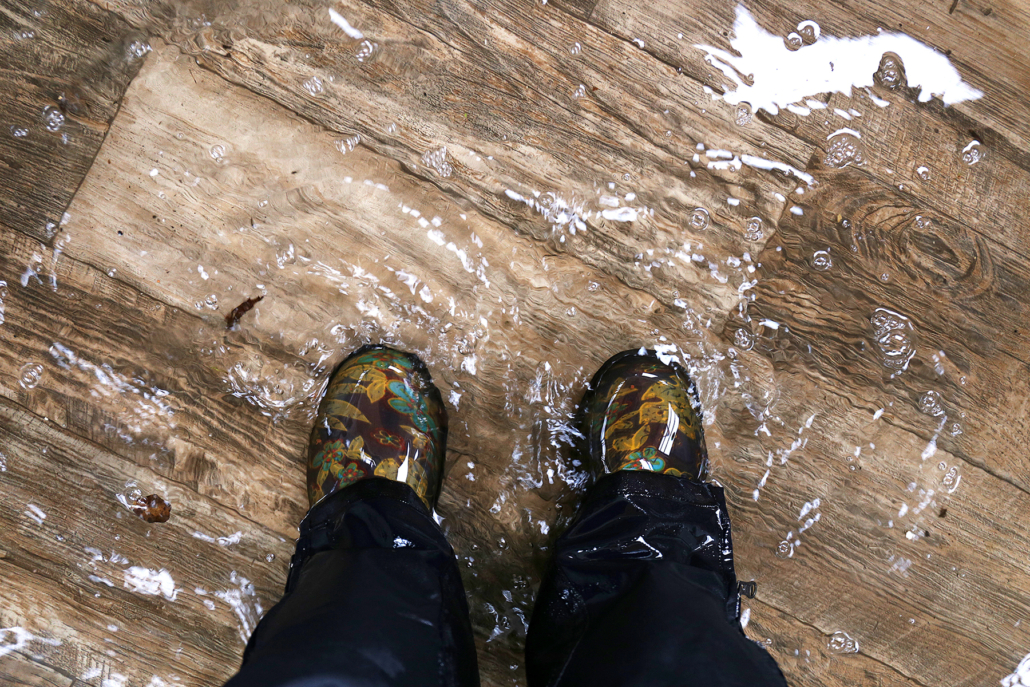Basement Flooding During Spring Thaw – Your Prevention Checklist!
We love springtime! Warmer weather, spring blooms – and rain. Protect your home from spring thaw AND basement flooding!
One of the most anticipated seasons, spring brings a sense of light and hope – warmer weather, longer days, spring blooms, and more time outdoors. And, of course, those factors that help accelerate the process like melting snow, runoff and rain. This perfect seasonal storm can leave homes vulnerable to basement flooding during the otherwise welcome springtime thaw.
If you haven’t prepared for more water around your home, it can be a disaster in the making. Water seeping into and through the walls of your home’s foundation can make for a very time- and labour-consuming, not to mention costly calamity.
Be proactive! Prevent basement flooding
As home insurance providers, we strongly encourage you to make and maintain an updated list of what you have in your basement. We know how much collects downstairs – a veritable junk drop for many of us! Furnishings, of course, but it’s often where photo albums, valued keepsakes, important documents, and more live in cardboard boxes on the basement floor.
Consider the state of your basement. Is it a finished space? Do you have drywall ceilings and walls? Do you have laminate flooring, rugs, or carpets? The condition and contents of your basement can dramatically impact how much replacement and repairs cost when you experience basement flooding.
“An ounce of prevention is worth a pound of cure.” ~Benjamin Franklin
Save yourself time, money, energy, and additional anguish when you get out ahead of the spring thaw to protect your valuable and beloved belongings.
Below is a handy checklist to help you prevent basement flooding. You’ll notice that they’re relatively easy and cost-effective, particularly when compared to the potential costs of a flooding basement.
1. Identify and repair cracks in the foundation
As the snow retreats, it’s a great time to inspect your home’s foundation, inside and out. Outdoors, take a good close look at the state of the foundation at ground level. Indoors, thoroughly examine your basement walls and floors. If you find cracks in the concrete, with a caulking gun, fill them with the appropriate filler required for masonry concrete. Remember that it might be difficult to distinguish those tiny shrinkage cracks found in homes, new and old, from those cracks that might be problematic. To help, it’s a good idea to hire an experienced contractor to identify and repair those issues.
2. Inspect your window wells
Many homes have basements that sit below the grade of the property, and as a result, so do the basement windows. During periods of heavy rain or during the spring thaw, as the snow melts, the window wells can be a source of basement flooding. For protection, install window well covers that fasten securely to your home’s foundation. Largely made from clear acrylic, the covers allow light indoors while they help guard against leaves and debris, various pests, and, of course, melt and rain.
3. Check your downspouts and gutters
Everyone’s gutters collect debris and dirt throughout the year. And spring is a great time to get out and inspect them, clearing them of any potential blockages that can lead to flooding. Your downspouts should direct water at least three feet from your home’s foundation. Add extensions where necessary to ensure you reach this distance.
4. Examine your septic or sewer system
This time of year is a great time to check your septic field and have it pumped, if necessary. During increased rain, and when you consider the additional spring runoff, a blocked sewer or an overextended septic system could pose a very costly, not to mention inconvenient, risk.
5. Check your sump pump
It’s important to always keep an eye on a sump pump if you use one. To ensure it works to capacity, keep it free of dirt and debris. Do you use a portable pump? Make sure it’s positioned in the lowest part of the basement and plugged in. It’s not unusual for homeowners to leave their portable units unplugged during the rest of the year and forget to connect them in the spring.
6. Review your home insurance coverage
It’s always a good idea to review your home insurance policy every year. If you experience basement flooding, are you covered? Do you feel that your home is particularly vulnerable to seasonal flooding? You might want to consider additional coverage, especially if you have invested in fully finishing your basement.
Too late – your basement is flooding! Here’s what to do:
If you discover water seeping into your home during increased rain or spring melt, here’s what to do:
-
- Remove the water! Your priority must be getting all of the water out of your home. If it isn’t removed immediately, the consequences can be quite costly, even dangerous – mould!
- Contact your Insurance Broker – as you may need to open up a claim.
- Depending on the degree of damage, consider the services of a restoration company.
- Once you remove the water, dry everything thoroughly. To prevent mould, provide ample ventilation and dry the space as quickly as possible. Are there windows you can open? Bring in fans to increase air circulation.
- Saturated porous items such as newspapers, paper documents, and cardboard boxes will likely need to go. These items are quite vulnerable to mould.
- Are your rugs and carpets soaked? If it’s possible to dry them quickly and thoroughly, you might be able to keep them. If not, they’ll have to be removed and replaced.
- Saturated drywall? Unfortunately, you’ll probably have to replace those damaged areas.
We want you to avoid the hard, inconvenient, and potentially costly work required to address a flooding basement. We want you to be prepared.
Do you have questions about flood protection? Talk to us!
We are British Columbia’s top insurance broker specialising in group and union member insurance. If you are a union member in BC, we can get you the best rates on your insurance.


